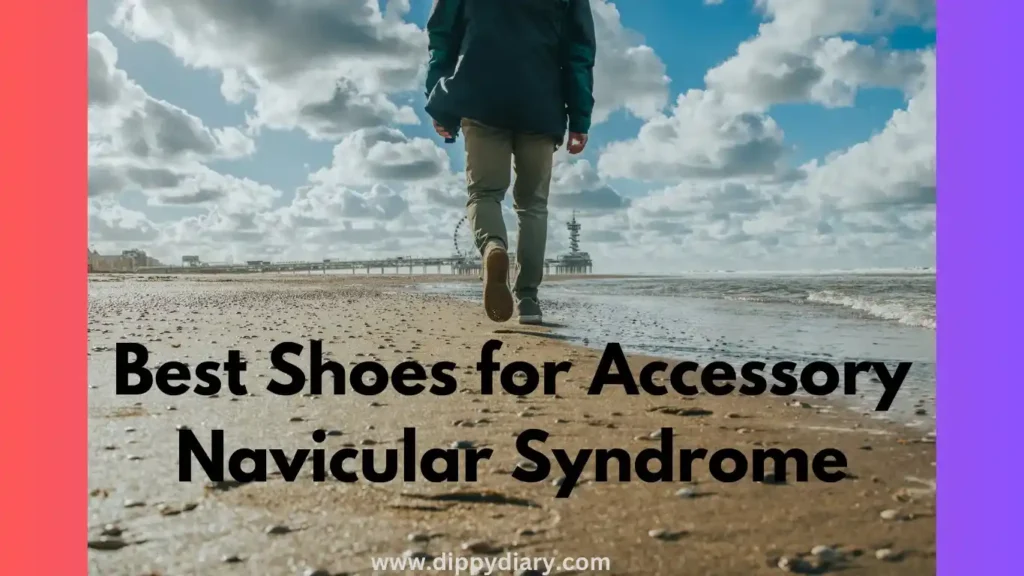Best Shoes for Accessory Navicular Syndrome – Accessory Navicular Syndrome (ANS) is a condition characterized by an extra bone, called the accessory navicular, located on the inner side of the foot. Individuals with this condition often experience pain, discomfort, and swelling, particularly in the arch area. Proper footwear plays a crucial role in managing this condition and alleviating symptoms. In this article, we will explore the best shoes for Accessory Navicular Syndrome, focusing on comfort, support, and relief. By understanding the key features to look for in footwear, you can make an informed decision to support your foot health and enhance your overall well-being.
Cushioning and Arch Support
One of the primary considerations when selecting shoes for Accessory Navicular Syndrome is adequate cushioning and arch support. Look for shoes with cushioned insoles that provide shock absorption and reduce pressure on the arch. Arch support is crucial in maintaining proper foot alignment and reducing strain on the accessory navicular bone. Opt for shoes with built-in arch support or consider using orthotic inserts for added comfort and stability.

Wide Toe Box
Choosing shoes with a wide toe box is essential for individuals with ANS as it allows enough space for the foot to spread naturally. A narrow or tight toe box can compress the foot, leading to discomfort and exacerbating symptoms. Look for shoes that provide ample room in the toe area, allowing your toes to move freely without restriction.
Adjustable Fit
An adjustable fit is crucial for accommodating the unique needs of individuals with Accessory Navicular Syndrome. Shoes with laces, straps, or buckles offer the ability to customize the fit according to your foot’s specific requirements. This feature helps reduce friction and pressure on the affected area while ensuring a secure and comfortable fit.
Lightweight and Flexible Construction
Lightweight and flexible shoes are recommended for individuals with ANS as they allow for natural foot movement and minimize strain on the accessory navicular bone. Avoid heavy and rigid shoes that may restrict your foot’s range of motion. Look for footwear made from lightweight materials, such as mesh or synthetic fabrics, combined with flexible soles to enhance comfort and reduce fatigue.
Stability and Motion Control
Stability is a crucial factor when selecting shoes for Accessory Navicular Syndrome. Look for shoes with sturdy heel counters and firm midsoles that provide stability and prevent excessive pronation (inward rolling) of the foot. Excessive pronation can aggravate symptoms and increase the stress on the accessory navicular bone. Additionally, consider shoes with good traction to minimize the risk of slips and falls.
Proper Sizing and Professional Fitting
To ensure the best fit and support, it is essential to choose the right shoe size and seek professional fitting assistance if needed. Sizes can vary between shoe brands, so always try on shoes before purchasing. Opt for shoes that accommodate the shape of your foot and provide adequate space in the toe box and arch area. A professional fitting can help identify the most suitable shoe styles for your specific foot structure and ANS condition.
Consider Orthotic Inserts
Orthotic inserts can be beneficial for individuals with ANS by providing additional arch support, cushioning, and alignment correction. Custom orthotics can be prescribed by a podiatrist or you can try over-the-counter options that offer arch support and cushioning. Orthotics can be used in conjunction with supportive shoes to optimize comfort and reduce symptoms associated with ANS.

Conclusion
Finding the best shoes for Accessory Navicular Syndrome is crucial for managing the pain and discomfort associated with this condition. Remember to prioritize cushioning, arch support, a wide toe box, and an adjustable fit when selecting footwear. Lightweight and flexible shoes with stability features are recommended to reduce strain on the accessory navicular bone. Proper sizing, professional fitting, and the option of using orthotic inserts further enhance comfort and support. By investing in the right footwear, you can improve your quality of life and promote better foot health with Accessory Navicular Syndrome.




